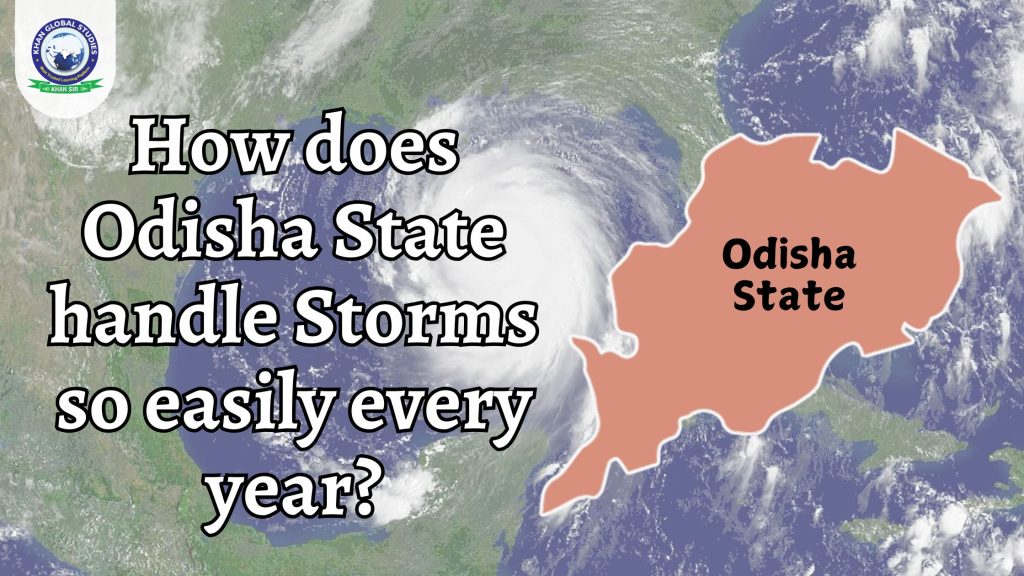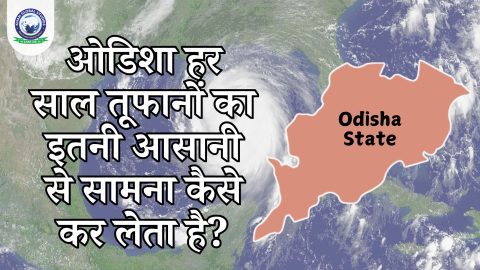The eastern state of Odisha, India, is often affected by natural disasters. Its geographical location is such that it often has to face storms coming from the Bay of Bengal. Every year many big and dangerous storms hit this state, but in the last few decades, Odisha has adopted such preparations and plans that it is now able to face storms and can reduce the loss of life and property to a great extent. Let us know, what did Odisha do that now it can face the storms firmly.
1. Effective Disaster Management System of Odisha
Odisha has developed a strong and organized disaster management system. The state government established the Odisha State Disaster Management Authority (OSDMA), which is extremely capable of issuing timely warnings and conducting rescue operations and relief operations during storms. Also, better coordination between the local administration, police and health department accelerates work efficiency in emergencies.
Role of Local Administration
The local administration prepares itself before the storms. The work of taking people to safe places and providing them with proper assistance is done promptly.
2. Education and Awareness Programs
Special programs have been run in Odisha to make people aware of natural disasters. Especially in coastal areas, people are taught how they can keep themselves and their families safe when a storm comes. Through schools, panchayats and community programs, people are told about rescue measures and are trained to take precautions during a storm.
Awareness of Rescue Techniques
Many awareness programs are run on how people should adopt rescue methods during a storm. Information about disaster preparedness, first aid and safe places is given in government schools.
3. Construction of Cyclone Shelters
The government has constructed thousands of cyclone shelters in the coastal areas of Odisha. These shelters are specially designed to withstand the impact of the storm and are built in safe places. These shelters have basic amenities like clean water, electricity, food, and healthcare.
Facilities and Safety
The cyclone shelters also have toilets, special arrangements for children and the elderly, and medical services, which make people feel more secure. The shelters are also regularly maintained so that they are fully prepared for any emergency.
4. Construction of Cyclone Shelters
Thousands of cyclone shelters have been constructed in the coastal areas of Odisha. These shelters are built in such a way that they can withstand strong winds and heavy rains. These shelters have essential amenities like water, food, and healthcare. The state government regularly maintains these shelters so that they are fully prepared in case of a disaster.
5. Effective Warning System
The Odisha government has created an effective warning system in collaboration with the Indian Meteorological Department and other educational institutions. The possibility of a storm is also predicted from time to time by the local administration and the public. Modern technology has been used in this warning system, which gives people a chance to reach a safe place from the storm in time.
Use of Digital Technology
Possibility of using digital technology People are also warned from time to time through SMS, radio, television, and social media. The state government has also advised people to use benefits like “radio system” and “cyber possibility.”
6. Efficient Rehabilitation and Relief Work
The Odisha government started the work of providing relief to the poor and labourers after the storm. People are provided with financial assistance, materials for building houses and employment opportunities to bring their lives back on track. Special magazines are also issued by the government for the affected farmers and traders so that their stock is affected as little as possible.
Livelihood Support Programme
Ukrainian Aid Program The government provides financial assistance, search request supplies and employment assistance to the affected people. Such people can quickly bring their lives back on track.
7. Involvement of Local Communities
Disaster management in Odisha involves the involvement of local communities. People from the Kashmir coast and the coastline of the region have been trained on how to work in an emergency situation. People from the cluster participate in primary relief work and help make the relief work a prayer in their area.
Community Support and Trust
Scientific assistance and loyal local people are not only trained to take care of their own safety during a natural disaster but they are also taught how to help doctors. This creates a sense of self-reliance and cooperation in the entire society.
8. Technical Assistance and International Cooperation
Technical assistance and international collaboration The Odisha government has received several international academic aids, which provide it with the latest technology and disaster management strategies. As technology improves, Odisha is promoting and advancing its disaster management. Modern weather forecasting systems, satellite data, and submerged evacuation systems are also being used.
Use of Digital Tools
The use of digital tools includes modern disaster forecasting tools like sunrise, satellite data and weather forecast-based information systems. These technological advancements help Odisha to stay prepared before and after storms.
Conclusion
Odisha state has proved through its hard work, better planning and effective action that no matter how big the disaster is, it can be handled easily. Today Odisha has not only kept itself safe from cyclones but has also set a perfect example for other states.
Frequently Asked Questions
Q: How safe is Odisha from cyclones every year?
Ans: By using effective disaster management systems, cyclone shelters, involvement of local areas and technical assistance, Odisha remains safe from cyclones every year.
Q: What is the importance of cyclone shelters in Odisha?
Ans: The main purpose of cyclone shelters in Odisha is to provide a safe place for people during storms. They also provide essential facilities like shelter, food, and clean water.
Q: How does the warning system work?
Ans: Various mediums like warning systems, satellites, weather data, SMS and radio are used. Through this, people are given information related to basic information so that they can be alert in time.
Q: What contribution do local communities also make in disaster management?
Ans: Yes, local groups in Odisha actively participate in relief work during disasters. The spirit of cooperation is strong in this society and people get an opportunity to recover from disasters.



